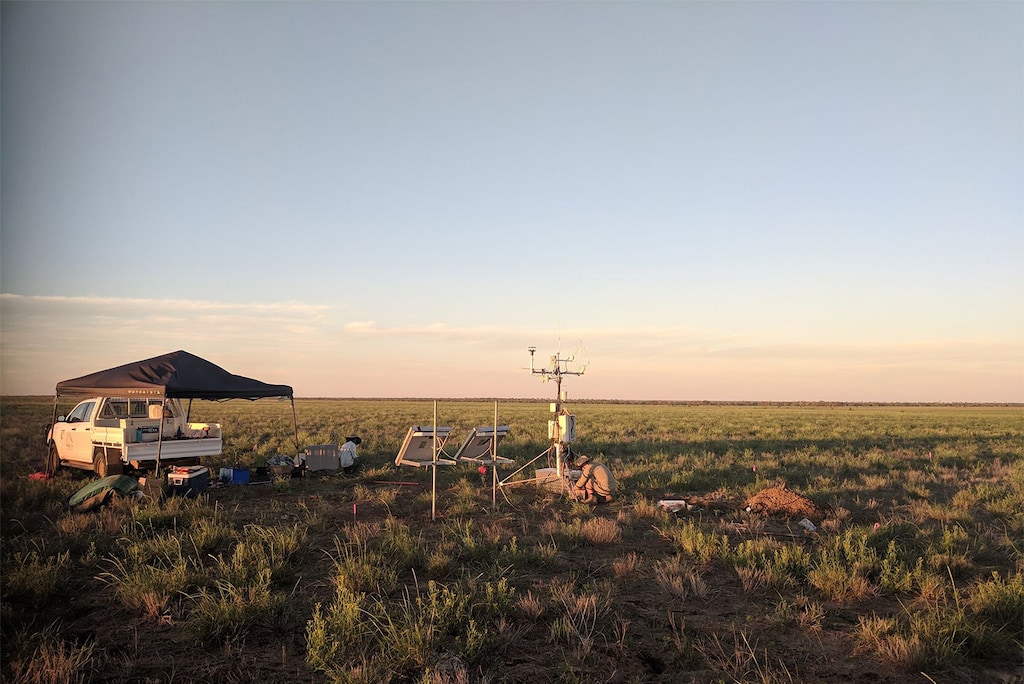From on-ground monitoring plots, to high-tech sensor-laden towers and satellite measurements, all scales of TERN’s ecosystem observatory are coming together at TERN’s Mitchell Grass Rangeland SuperSite in Queensland to deliver critical data for research, policy, management and industry-led extension.
Covering an area larger than New Zealand, the Mitchell Grasslands are Australia’s most extensive tussock grasslands, supporting several threatened species and a nationally important grazing industry.
Recognising a shortage of data on the region’s ecosystems and essential services, TERN’s ecosystem observation work in the Mitchell Grasslands began 2015 with the establishment of 27 vegetation and soil monitoring plots. Detailed data and samples from these plots provide an important baseline for future research.
This plot-based infrastructure was supplemented in 2018, when TERN, together with the Queensland University of Technology, established a much larger 25-hectare monitoring SuperSite.
Located at the Longreach Pastoral College, the site is equipped with one of TERN’s sensor-laden flux monitoring stations, part of the TERN-enabled OzFlux regional network.

Panoramic view of the Mitchell Grass Rangeland SuperSite including the site’s flux and instrument station (credit: David Rawlings)
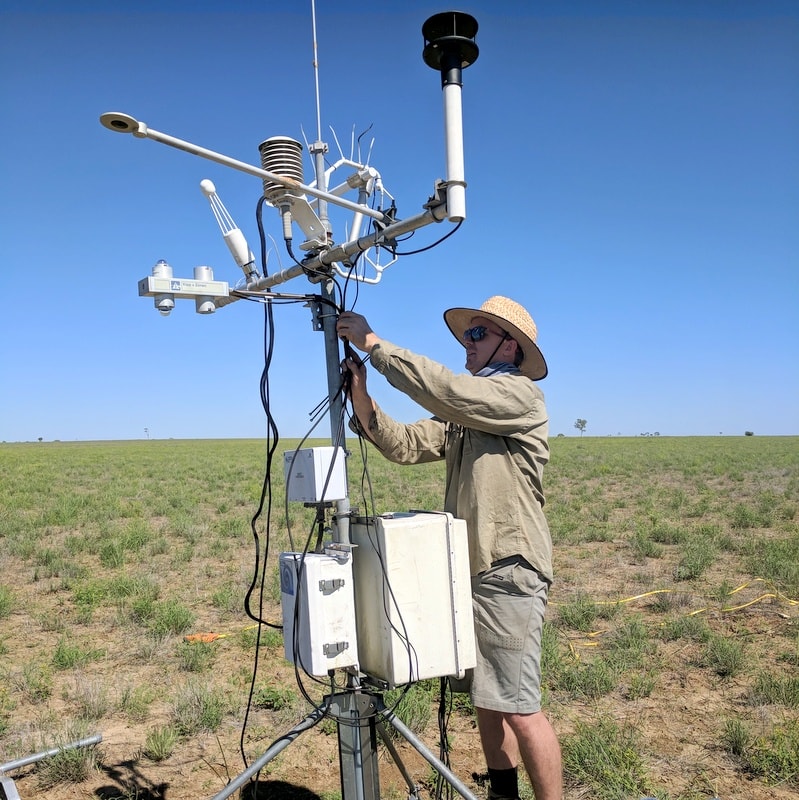
Grasses as far as the eye can see
Mitchell grasses, or Astrebla spp., are widespread across much of Australia. But in the Mitchell rangelands region, they dominate a vast treeless area stretching from Queensland into the Northern Territory.
The region is primarily located in the tropical and semi-arid zones of northern Australia, where rainfall patterns are influenced by the summer monsoon. Mitchell grasslands are home to distinctive Australian fauna, which includes species noted for undergoing dramatic population explosions, such as with the long-haired rat (Rattus villosissimus) – a response to variability in yearly rainfall and seasonality.
Annual rainfall at the Mitchell Grass Rangeland SuperSite is nearly 450 mm and temperatures range from as high as 46 °C in the summer to -3 °C in the winter, where frost events can occur across much of the land surface.

Comprehensive data for better ecosystem and agricultural management
The extensive land area occupied by the Mitchell grass rangelands is virtually given over to grazing of cattle and sheep on the native pastures. The TERN site is located within this agricultural landscape, providing important information about how changes in management practices, such as livestock stocking rates and grazing intensity, impact the Mitchell grass ecosystem.
‘The alkaline clay soils of this region have a high potential for sequestering soil carbon. Small increases in soil carbon across the nearly 50 Mha of the Mitchell Grass Rangelands makes an invaluable contribution to offsetting Australia’s greenhouse gas emissions.’
Prof. Peter Grace, Queensland University of Technology
By measuring carbon, water and energy fluxes, as well as changes in meteorological variables, the site provides much needed information about how climate and land management are shaping this drought-prone region.
“The Mitchell grasslands are adapted to drought, however the extreme climatic variability of this region of Australia makes them highly sensitive to total grazing pressure, which is livestock plus native animals.
We are using data from the TERN Mitchell Grass Rangeland SuperSite to examine the impact of grazing pressure on pasture growth, cover and soil carbon, as well as collecting critical carbon cycling and soil stabilisation data for improving biogeochemical models to predict how nutrient cycling in these marginal grasslands will be impacted by climatic change and variability.”
Assoc. Prof. David Rowlings, Queensland University of Technology
Two total grazing pressure exclusion cages have been installed at the site and are sampled quarterly for biomass growth. Acoustic sensors have also been installed as a cost-effective means of assessing the impact of grazing practices on biodiversity.
A COSMOS soil moisture sensor will also be installed at the site in September 2021 to provide an additional soil moisture monitoring capability across a 30 ha area and to become part of TERN’s 23-site Australian Cosmic-Ray Neutron Soil Moisture Monitoring Network.
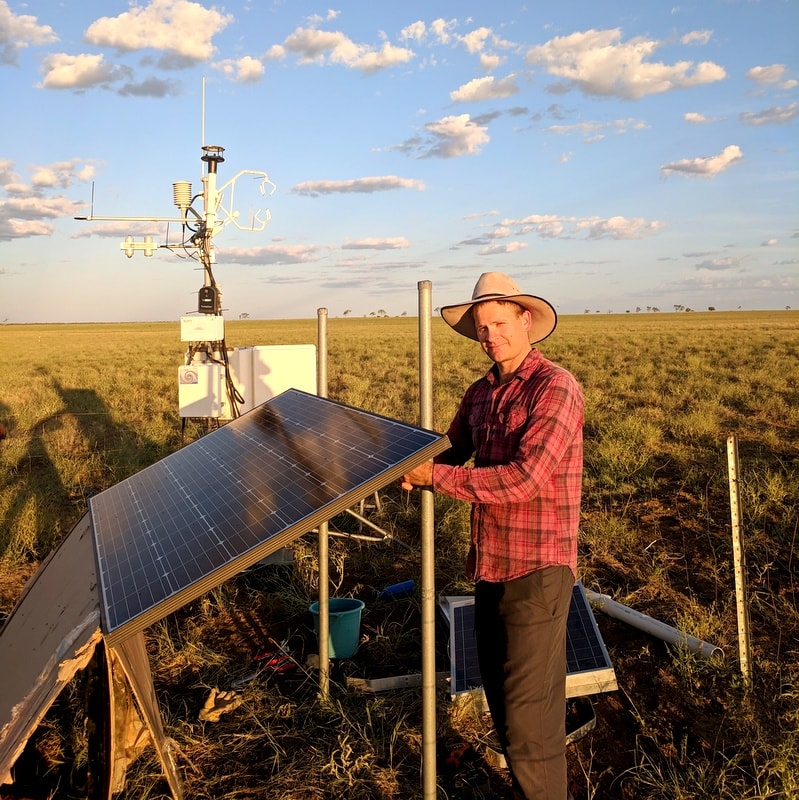
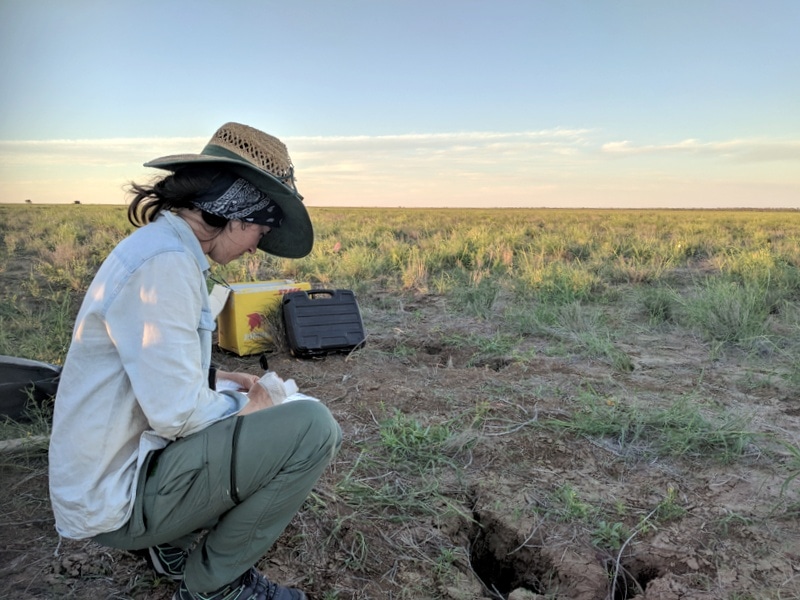
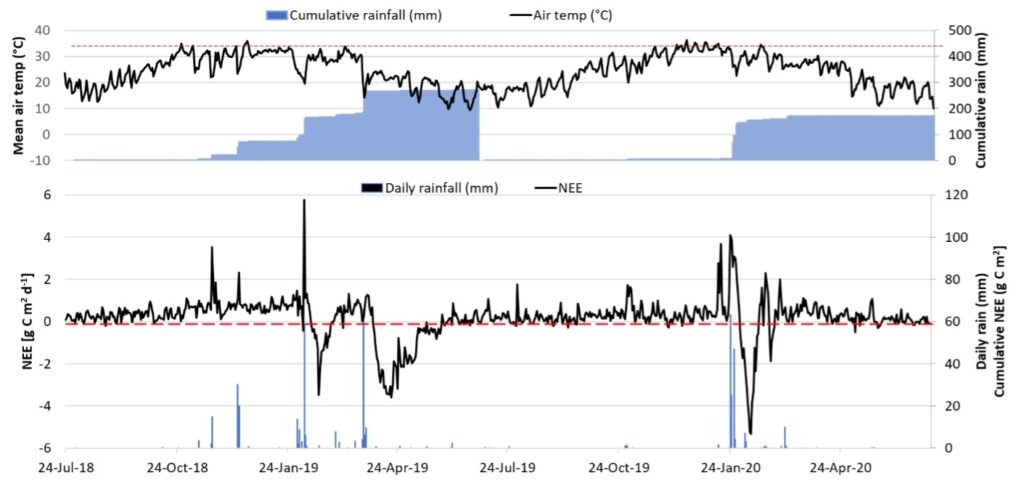
Net ecosystem exchange (NEE) timeseries over two years of measurement at the Mitchell Grass Rangeland SuperSite, including mean daily air temperature and rainfall. Note the response of NEE to large rainfall events (credit: Peter Grace).
Critical infrastructure for Queensland Government policy and industry-led extension
Scaling-up the findings of plot and site-based research, like David’s, and integrating them with landscape-scale datasets will help farmers and land management agencies make more informed decisions.
TERN has the region covered, via its Australia-wide remote sensing data on attributes including, measures of greenness/dryness, phenology and land cover, but the Mitchell Grassland site also plays another vital role in satellite-data delivery.
The site is regularly used by researchers from the Queensland Government, Geosciences Australia and the CSIRO to conduct the on-ground validation of nationally important Earth Observation data.
For example, the Queensland Government’s Remote Sensing Centre and its research partners at the University of Queensland and the University of Southern Queensland, are using data from the TERN site to calibrate and validate surface reflectance products from Landsat and Sentinel satellites, as well as landcover products including fractional cover and pasture biomass.
These products are used by the Queensland Government to inform policy implementation, regulation and compliance, and industry-led extension and management practice improvement programs, particularly in the grazing sector.
TERN has the region covered, via its Australia-wide remote sensing data on attributes including, measures of greenness/dryness, phenology and land cover, but the Mitchell Grassland site also plays another vital role in satellite-data delivery.
The site is regularly used by researchers from the Queensland Government, Geosciences Australia and the CSIRO to conduct the on-ground validation of nationally important Earth Observation data.
In one such example, CSIRO’s Tim Malthus has used the site to collect field data that will be used to calibrate and validate Digital Earth Australia products, including priority data on Surface Reflectance (NBAR).
“Open-access to the TERN research site allowed our team to collect surface spectral reflectance data as part of a satellite validation campaign,” says Tim. “At the site, we used a spectroradiometer over a homogenous 1 ha plot that coincided with overpasses of the Sentinel-2 and Landsat satellites.”
“Satellite-derived surface reflectance data is instrumental in identifying and quantifying environmental change, and the on-ground data we collect at TERN sites is essential in ensuring the accuracy of the product”.
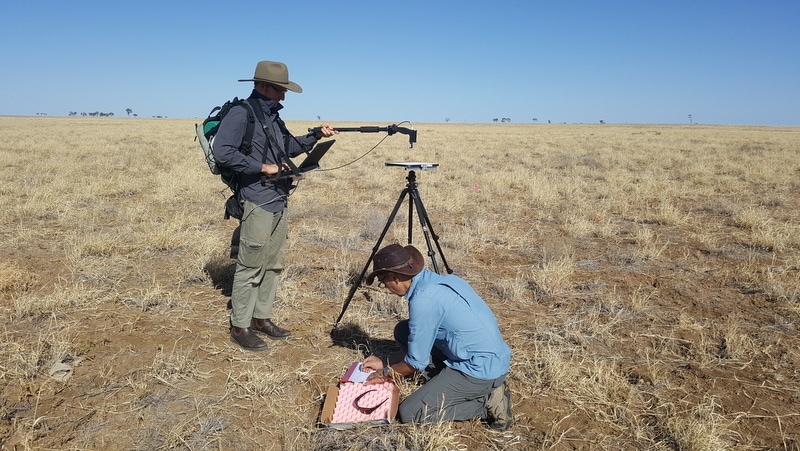
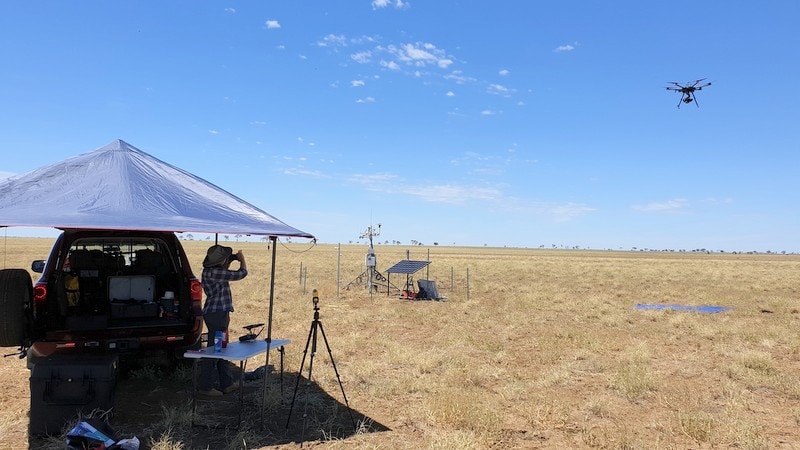
- TERN’s Mitchell Grass Rangeland SuperSite is located at the Longreach Pastoral College, a short distance from the township of Longreach. The site is open to interested users and offers facilities for researchers and educational visitors. Please contact us for more information.
- Data from the Mitchell Grasslands Rangelands SuperSite on soil, vegetation and ecosystem processes are openly available via the TERN Data Discovery Portal.


